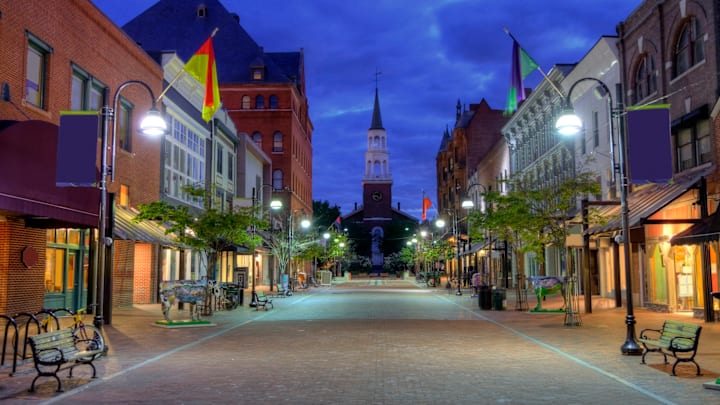It’s harder and harder to make ends meet in this economy, and it’s not just the rent that is too damn high. Average home prices across the U.S. rose 6.6 percent from the first quarter of 2023 to the first quarter of 2024, based on recent data from the Federal Housing Finance Agency (FHFA), which regulates the federal lenders that support much of the residential housing market in the United States.
According to Visual Capitalist, this represents the greatest increase we’ve seen since 2022. Experts attribute it to limited housing inventory and the unwillingness of existing homeowners to sell. (Doggedly high interest rates aren’t helping matters.)
While the typical growth on single-family homes was 6.6 percent, the 10 states below are driving that up, with annual appreciation far exceeding the national average.
The 10 Most Expensive States to Buy Homes
Rank | State | Single-Family Home Price Growth (Q1 2023–Q1 2024) |
|---|---|---|
1 | Vermont | 12.8 percent |
2 | New Jersey | 11.6 percent |
3 | New York | 10.9 percent |
4 | Delaware | 10.7 percent |
5 | Kansas | 9.9 percent |
6 | Wisconsin | 9.9 percent |
7 | Connecticut | 9.6 percent |
8 | Illinois | 9.4 percent |
9 | New Hampshire | 9.4 percent |
10 | Maine | 9.1 percent |
Vermont tops the list, with home prices rising 12.8 percent year-over-year (YoY). While the Green Mountain State isn’t necessarily the first to come to mind as a housing hotbed, home inventory is lower in the state than it’s been in over a decade, which likely has contributed to the surge in prices. Next come three Mid-Atlantic states—New Jersey, New York, and Delaware—each experiencing YoY growth of over 10 percent, likely due to low inventory and buyers migrating to more affordable areas from outside of major metropolitan areas, which are significantly more expensive.

On the other end of the spectrum, two of the hottest real estate markets in the wake of the COVID-19 pandemic—Florida and Texas—have begun to cool down, both falling below the national average. Visual Capitalist points out that over 25 percent of single-family building permits from 2019 to 2023 were from those states, producing an excess of new housing inventory (which might be the reason why those prices are dropping). At 2.2 percent YoY, Louisiana had some of the lowest overall growth, although annual appreciation in both Mississippi and Alabama was under 3.3 percent. In Washington, D.C., values actually underwent negative growth, dipping to -1.5 percent YoY.
So what does a person do to stretch their dollars when house hunting? LowerMyBills offers a few tips: First, look for vacant, inherited, or “for sale by owner” (FSBO) homes, as well as listings that have been on the market for a while, as these sellers may be open to negotiation. Another strategy is to look for short sales, foreclosures, or auctions, where lenders have more say in the selling price and may be willing to accept something closer to the outstanding amount on the existing loan rather than the “market value” of the property.
Whatever the strategy, it’s critical to understand the monthly costs associated with paying back a home loan. Sites like Zillow and Redfin offer mortgage calculators that help you determine what’s really in your price range. But it’s also important to remember the hidden costs of buying a home, which often include closing costs, taxes, insurance, and, where applicable, HOA fees.
